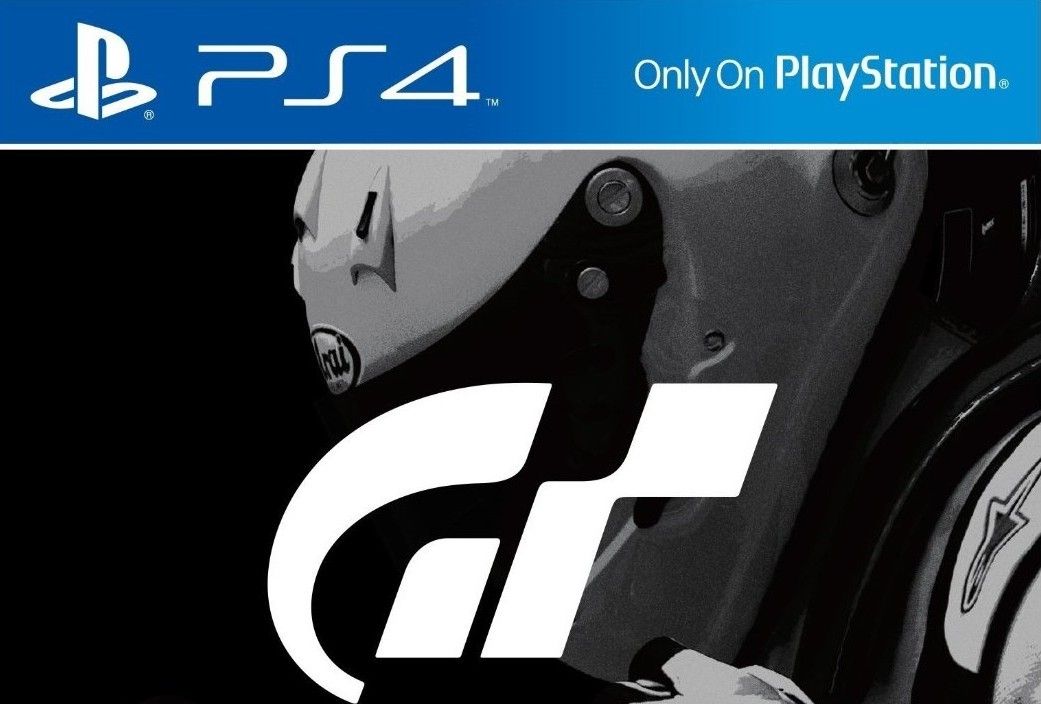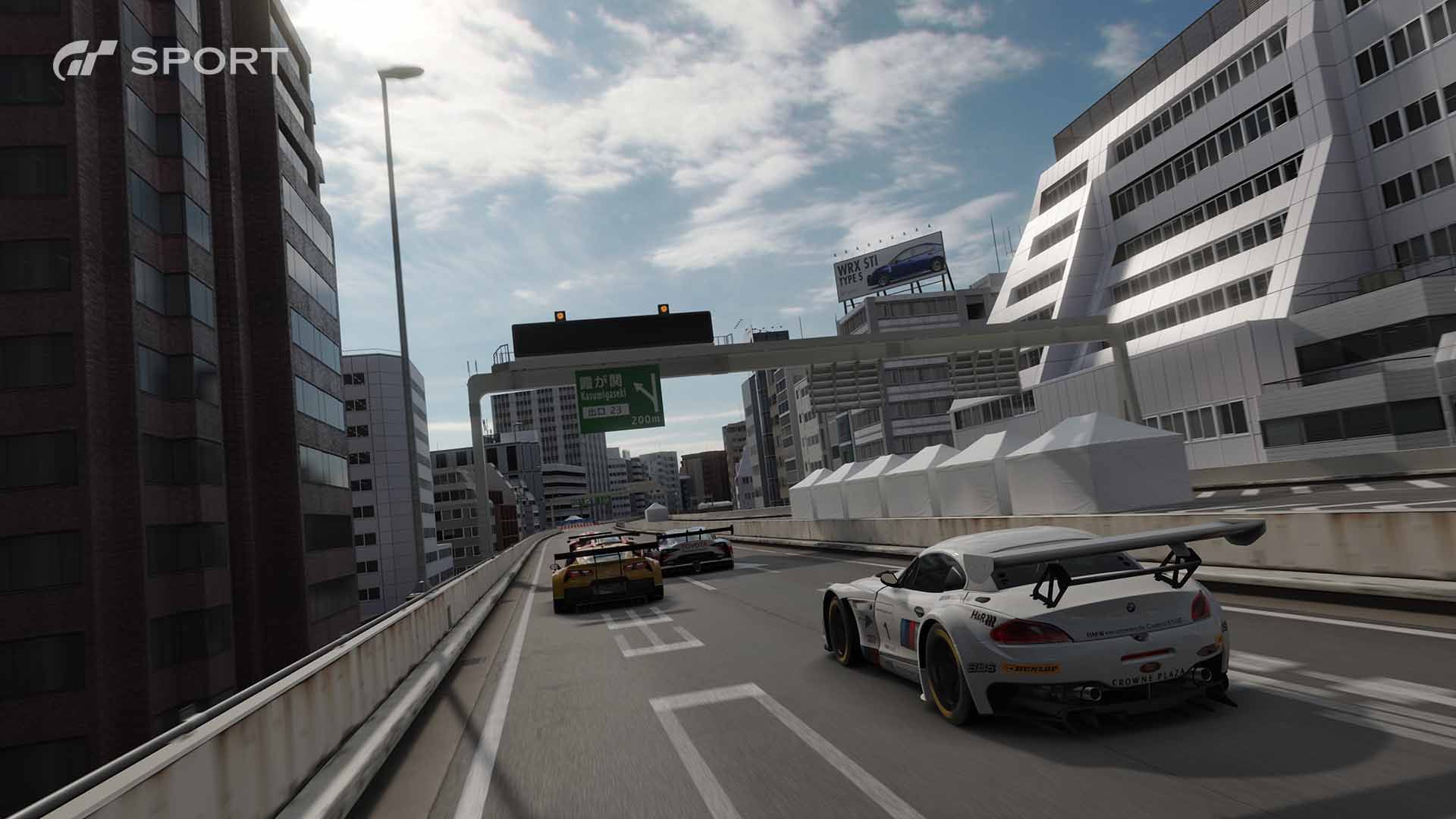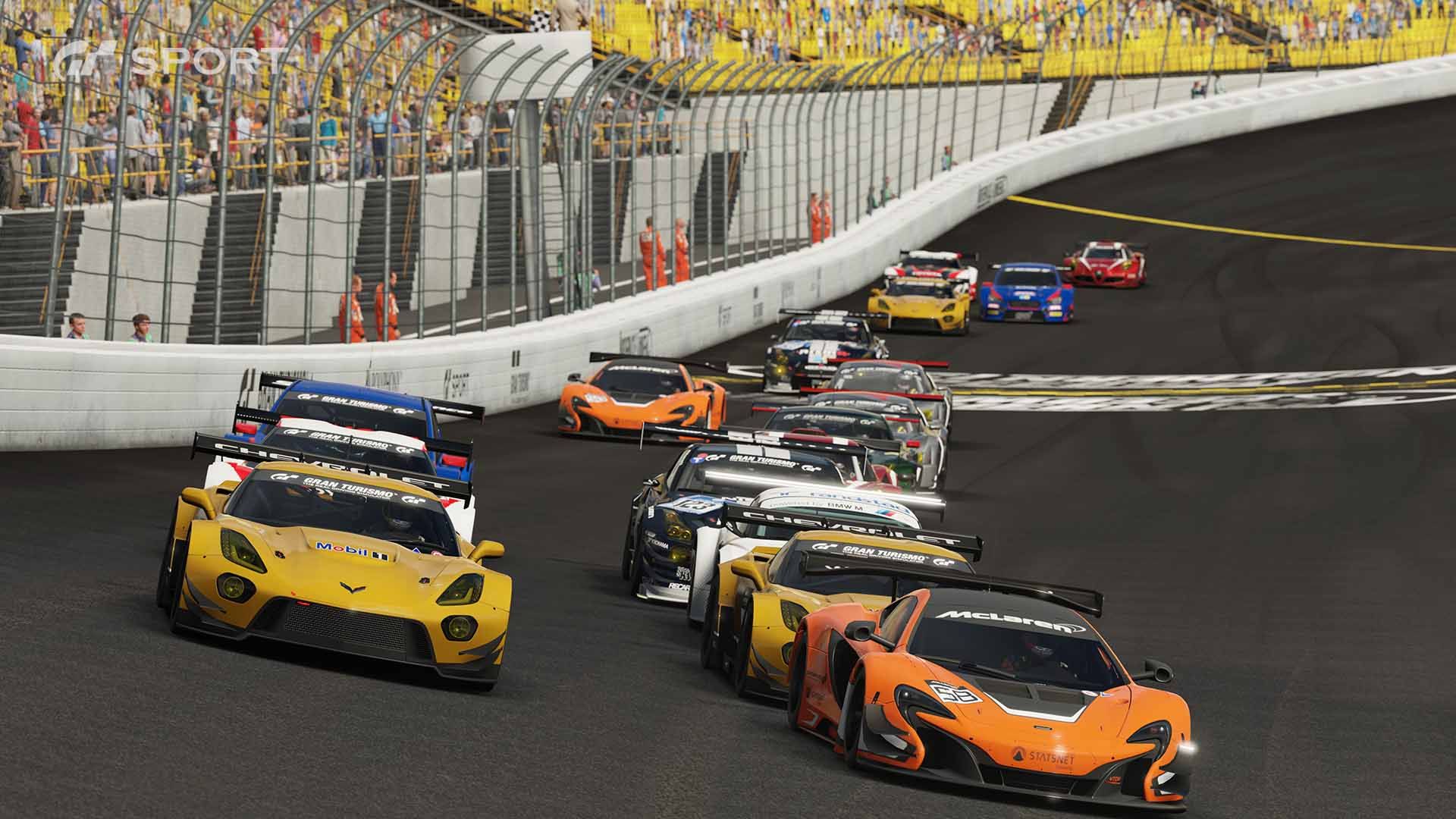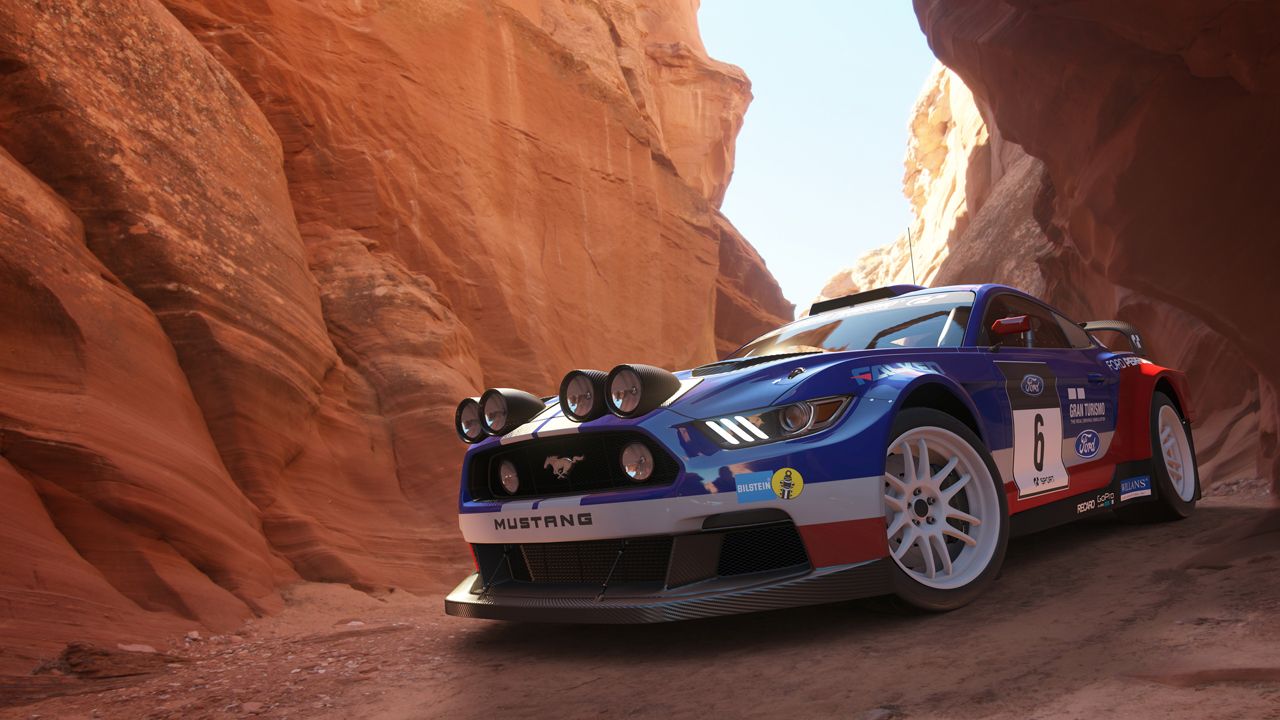Yesterday Sony Interactive Entertainment unveiled GT Sport, or Gran Turismo Sport (however you want to call it), but the reveal has been met with negativity by a vocal percentage of those who saw it.
A major point of criticism were the graphics, with many drawing a comparison to the incredible visuals of Driveclub, and others criticizing the game's environments, calling them drab and boring.
So let's talk about the visuals first, and let's get something out of the way: expecting GT Sports to have visuals even comparable with Driveclub is a bit on the crazy side. Driveclub runs at 30 Frames per second, while GT Sports run at 60.
Whether you prefer 30 FPS with stunning visuals and vistas, or 60 FPS with those visuals getting somewhat sacrificed, it's a very personal choice, and a discussion for another time, but the teams at Evolution Studios and Polyphony Digital obviously focused on very different elements, so the comparison simply has no legs to stand on.
Rendering twice as many frames doesn't normally translate directly with needing twice the power (or being stuck with halved fidelity), as the equation isn't entirely linear, but it's doubtless that if you want a game to run at 60 FPS, you have to make very relevant sacrifices in terms of graphics compared to one that runs at 30 FPS on the same hardware.
We're also not looking at a finished profuct. You probably noticed that the track showcased almost completely lacks billboards and branded decorations. That's quite normal, as those elements often get added late in development, since they involve licensing work that probably still needs to be done.
The same can be said about the new Tokyo Expressway, which isn't a "real world track" per-se (while it does depict a real world location). If you look at the footage, it's very evident that this build of the game came with a bare bones work-in-progress version that included only what was needed to actually race on it. It lacked any sort of decorations and even street signs, that most likely will be there in spades in the finished game, since it's an urban track.
That said, whoever has visited an actual track in the real world, knows that most aren't built to visually impress (with the exception of a few, like Yas Marina, but none of those was featured ysterday), but they are utilitarian and spartan, dedicated to the essence of racing, not to pleasing the eye.
So yes, most of them will feature drab concrete buildings, fairly boring grass fields and very little in term of glitz. That's how most real world tracks are, and since the Gran Turismo series is dedicated to reproducing the sensations of real racing, there's nothing wrong with that.
That's also why most realistic and semi-realistic racing games pool most of the hardware resources on the rendering of the cars. Super detailed 4K textures aren't going to make naked concrete look much more appealing, even because that concrete is gonna zip off the corner of your eye really fast.
We shouldn't forget that since the relative speed is similar, and due the fact that we need to (try to) avoid crashes, cars are the element that our eyes will be focusing on while driving, not the drab concrete buildings around us. Screenshots and spectating cameras are often misleading, because they give us all the time of the world to focus on things that we won't even notice while we're at the wheel.
This is not to say that developers shouldn't care at all about environments, but placing the vast majority of the hardware resources in rendering the cars makes very much sense for this kind of game. And the cars in GT Sport look fantastic.
Incidentally, there are also more on track than in previous chapters of the series, which means that a few million polygons go into rendering the additional competitors. That's definitely not a secondary element, and should be considered when judging the new game compared with Gran Turismo 6.
Now that I've talked about visuals, I'll tell you a secret: it was mostly just to get it out of the way, as graphics simply shouldn't be what we focus on the most.
Since yesterday, I have seen some fairly disappointing (to use a charitable euphemism) previews of the game that bashed its visuals right from the headline. That's pretty depressing, considering that visuals are a very nice bonus in a racing simulator, but they definitely shouldn't be seen as the main point.
I'd guess that many of those writers simply aren't intimately familiar with racing games beyond your usual Need for Speed. Advanced racing sims, even when accessible like Forza Motorsport and Gran Turismo, are akin to genres like strategy games and MMORPGs, as they require great dedication and/or a lot of time to be mastered.
Most journalists are game-hoppers due to the nature of the job, so they tend to write an inane amount of gibberish about genres that require time and dedication, or to focus on production values like graphics and sound, because they're pretty much the only element that they actually understand.
In fact, those previews that came with inflammatory headlines mentioning how we shouldn't expect to be blown away by the game, or that it isn't the visual showcase we (we who?) have been expecting, say very little about gameplay or how the cars handle. Funnily, that very little is positive, but of course few will notice it, because the headlines and content are so skewed towards production values.
So we read that "it handles like a treat." or that if you played Gran Turismo you know what to expect from the physics and... that's it. No details are provided on how the car interacts with the asphalt, the feel of the suspensions and tires, the sense of speed... Are they rear-happy? How do they behave under power? Understeer? Oversteer? Grip? Nothing of that is even remotely mentioned.
The whole "preview" of the most relevant elements of a racing simulation is condensed in five words. The funny thing is that the rest of the 700-800 words of those previews is focused on things that we can all see and hear on our own just by watching the videos or reading a fact sheet with a feature list. Yet, what we really need a hands-on preview for -- the gameplay -- is condensed in five words thrown there off-handededly like it wasn't important at all.
I'm sure that I'm not the only one that finds that ridiculous. Gameplay, physics and car behavior are the bread and butter of any racing simulator or semi-sim, and it's what our attention should be mainly focused on. Of course, talking in that that would conflict with the "narrative" and the flamebait that brings all those juicy clicks from a throwaway, fire-and-forget glorified feature list disguised as a preview.
What we saw yesterday was actually quite impressive. The interaction with the track on the Nürburgring Nordschleife looked amazing, and high horsepower GT cars seemed to feature a well simulated degree of instability that often took by surprise even experienced virtual racers. At first sight, it appears that Polyphony Digital pushed up the simulation value of the game considerably compared to Gran Turismo 6, and that's something definitely exciting.
The difference in downforce between GT-class cars and sports prototype cars was very visible, and the way they reacted to the bumps on the asphalt was night and day, exactly as it should be.
While we weren't able to see the damage model (which will be implemented, but wasn't active yesterday), it's also rather evident that the collision model has been overhauled. Cars behaved much more realistically when bumped, mostly avoiding the "bumper cars" sensation that has plagued the series since its outset.
We also got a glimpse on the effect of curbs and grass on stability at high speed, and that too looked very interesting at first sight, alongside the dynamics of weight shifting when cornering, that appeared to be top-notch.
What was most impressive were the physics of the interaction between suspensions, tires and asphalt. While it's hard to gauge the level of fidelity with any precision just by watching a video, looks like Polyphony Digital focused a lot of computational horsepower on what's basically the most critical element for a racing simulation to "feel" right.
Ultimately, high-level physics simulation has a cost in terms of hardware resources, and not a small one. People normally think of frames per second in terms of visuals and fluidity, but that's only part of the picture. Physics also have a frame rate of their own, depending on how many times per second the game calculates physical interactions, and that's critical for a great racing sim.
And that's not even all, as every "moving part" of the physical simulation adds further stress on the hardware, but also provides additional depth to the gameplay. Shifting part of those calculation on GPU compute helps immensely with performance, but there is an inevitable trade-off with visuals. I dare say that in a game like Gran Turismo, especially with the new competitive focus, having high physics refresh rate and a deep handling simulation is much more relevant than looking shiny and colorful.
iRacing is considered one of the best racing simulators in the industry. It runs on PC, but it really doesn't push visuals as far as you'd expect from a game that can take advantage from much better hardware than your usual console- That's because most of that hardware is dedicated to make your car feel right and creating the most advanced and precise competitive simulation possible.
Another very relevant element that is getting way too little attention is the collaboration with the FIA, which is the governing body of most of the most relevant racing series in the sport.
This isn't simply a label slapped on the game for marketing purposes. In a way similar to iRacing (even if probably without the same level of micromanagement, which is understandable since iRacing requires paying a monthly fee), it brings the rules and regulations of official motorsport to competitive gaming, and that's fantastic.
We're going to see realistic flags, pace cars and racecraft that is mostly completely ignored in the vast majority of less advanced racing games, and this is going to influence the gameplay massively (if it's well implemented, of course), as it encourages clean racing and sportsmanship over just bumping your adversaries against the guard rail.
It has the potential to create a really enjoyable racing environment that will have to prove itself against the often nasty reality of online gaming on consoles, but is definitely an experiment worth pursuing.
The feature set also seems to be extremely wide, adding a lot of scope and breadth to the game. From what we have seen so far, GT Sport has the potential to keep racing fans entertained for a long time, without forgetting offline gameplay despite the new competitive online focus. That's definitely not a small thing.
Ultimately Gran Turismo Sport is a lot more promising than what many give it credit for. Its visuals are still unfinished, and will most probably (and rightfully) focus on the cars even when done, but it has the potential to brings the series to a new level of fidelity.
And I don't mean visual fidelity, which is a nice bonus but isn't the be-all and end-all of a racing sim, but of gameplay fidelity, which is what really matters.





